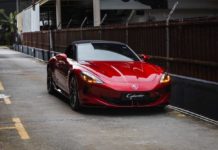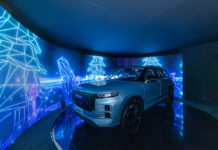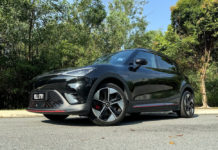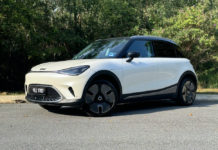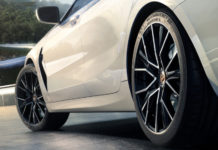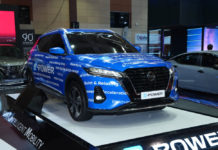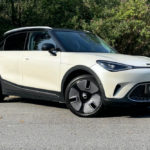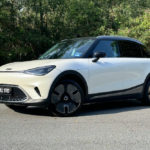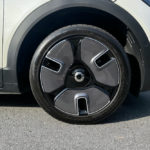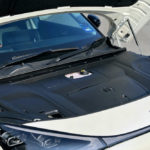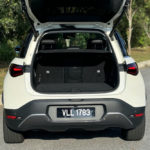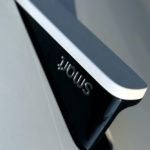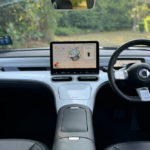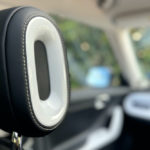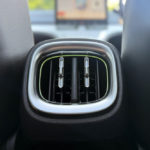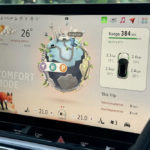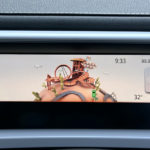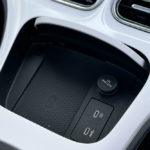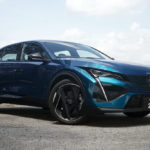It is funny how car brands that make small cars end up making something much bigger than its predecessor. But in Smart’s case, the size-up is logical. Small and squishy cars like the Fortwo are cute but not very practical. So now, Mercedes-Benz with Geely revolutionised the entire lineup, starting with the aptly named Smart #1.
The Smart #1 is a fully electric compact SUV that is far more practical than any Smart vehicles that came before. Yet, the #1 playful shape retains all the youthful vibes the brand always had – colours included and can be had without a premium.

DESIGN – PLAYFUL, AND THAT’S PERFECTLY FINE
The fascia resembles an emoji, especially with the inward-pointing angle bracket DRLs. And while the rear lights reflect the front, the assembly looks similar to designs employed by Mercedes-Benz in their own SUVs.
While the Smart #1 resembles a hatchback, its size is definitely that of an SUV. Standing at 4,270mm long, 1,822mm wide and 1,636mm tall, with a wheelbase of 2,750mm no one will think twice what this vehicle is. Open the rear hatch to reveal a boot space of 986 litres with the seats folded or 411 with the seats up, which offers enough luggage space for four on a weekend road trip.
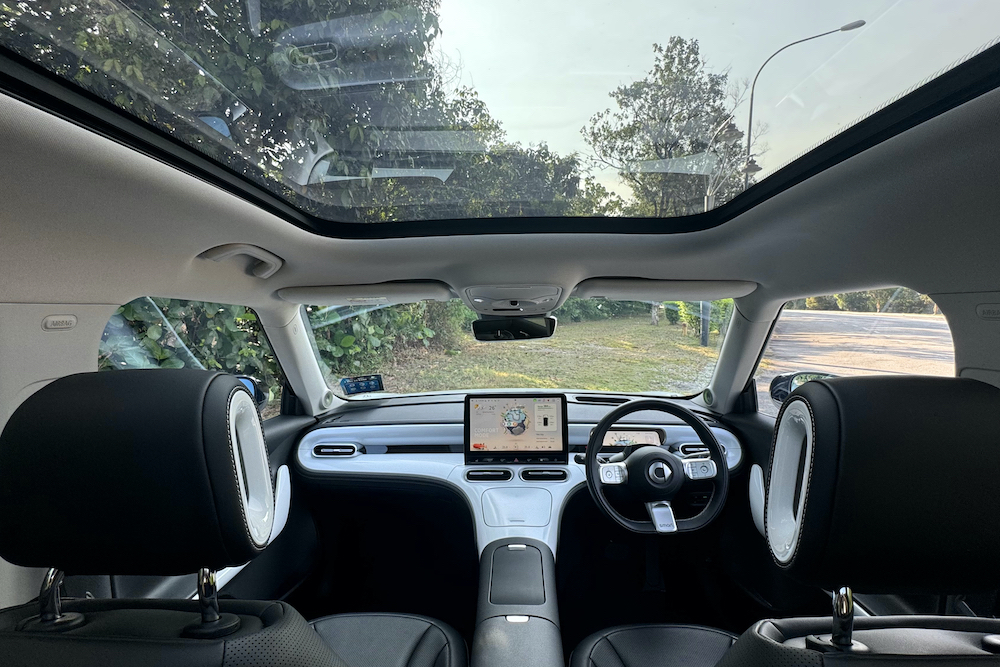
INTERIOR – MINIMALIST, BUT MOVING GRAPHICS GIVE LIFE
The rear seats two adults comfortably but the fifth will make it snug for all. The centre console splits the front two passengers, effectively placing each in their own comfortable place.
Minimalism is what the interior designers were going for and succeeded. The designers managed to fit three storage areas in the middle console – a storage box in between the passengers, cupholders in front and a lidded box with wireless charging and power points.
Of course, a 12.8-inch landscape-oriented screen is placed in the middle within reach of your fingertips. Here, you’ll find all the car’s functions from media, to driver assist systems, to how much force you want for your regenerative braking.
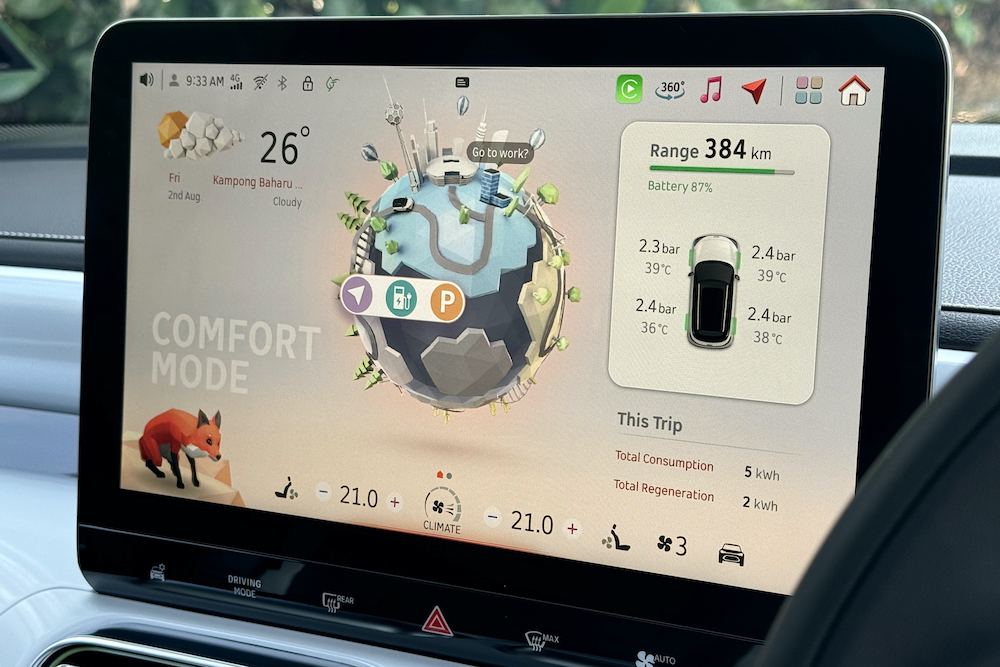
On the point of regenerative braking, this Smart #1 OS’ has been updated to include ‘Low’, which aims to mimic the brake force of a standard vehicle. You’ll also find the same in the #3. Smart says this should ease new EV drivers into a newer driving experience. With ‘Low’ engaged, the #1 does take its time to slow down, as opposed to applying stronger brakes. So, it works.
So, how do you know if you have the new OS? Just look for the cheetah companion. The fox remains in the stable in case you prefer it. Either way, the animal companions give life to a rather interesting and very informative home screen.
Just below the screen is a thin panel with various functions for quick access. These are not switchgear, mind you, so hitting the right function still needs eyesight.
The driver gets a small screen, smaller than the overall real estate of standard meter clusters. Yet, this is enough to display all other supplementary information as more crucial ones like speed and traffic warnings are projected on the windscreen through the full-colour HUD.

POWER – PUNCHY ACCELERATION, GRABBY BRAKES
Yes, the Smart #1 is a speedy vehicle. The rear-mounted electric motor generates 272PS and 343Nm. Acceleration is quick and there’s no reason to doubt the 0-100kph of 6.7 seconds. But to get a smooth acceleration, you need to be gradual with the throttle. Mash it and you’ll be met with what feels like a turbo lag before taking off. This, perhaps, is done to allow the software to temper the electric acceleration else you might rear-end the car in front.
Coming down from speed is another matter. Other than the new mode, the braking is quite punchy but not in a good way. The brakes grabs as soon as you lift off the accelerator, bringing the #1 to a stop quickly with no chance of coasting to the traffic lights. The E-Pedal is a tad more aggressive, perhaps selecting the hardest brake available. Of course, this is done so that #1 has more opportunities to regenerate energy. And with more energy means more range.
Energy comes from a 66kW Nickel Manganese Cobalt (NMC) battery that yields a 440km WLTP range. The same can be found in the #1 Brabus but the performance-oriented has 40km less range. The difference is not just the engine tuning but the aero-wheels on the Premium also makes it more efficient on the run. Going from 20 to 80 per cent on a DC charger can be as slow as two hours or 30 minutes, depending on how many kilowatts the charger delivers.
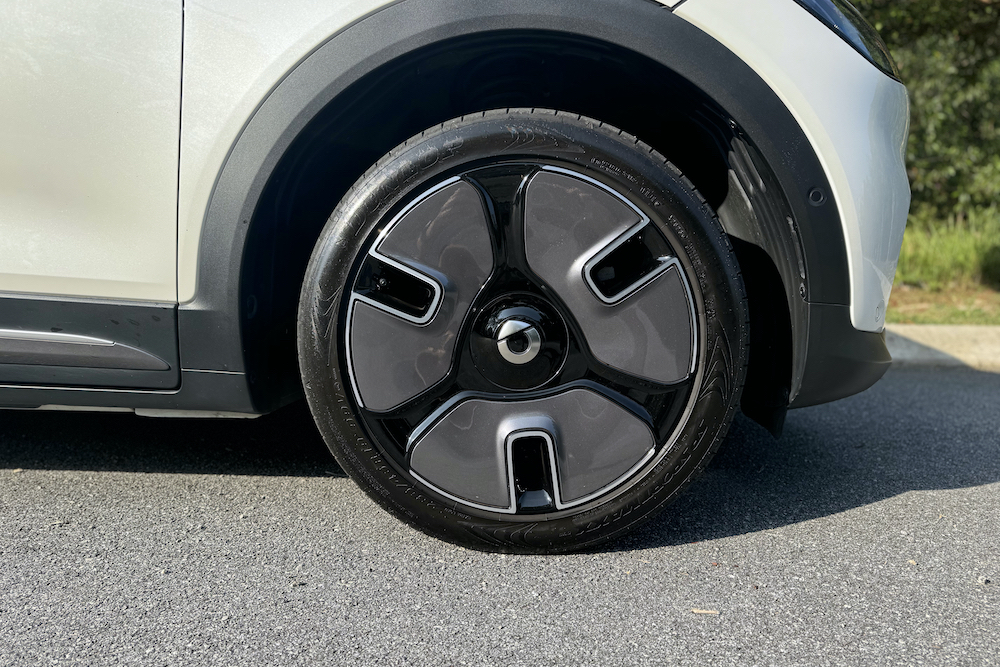
HANDLING – LIKE A HATCHBACK, ALMOST
The Smart #1’s rear-wheel drive nature makes it easier to steer the SUV into place. The steering firms up with how fast you’re going turns as quick and accurately as you want it and has good feedback.
Body control scores high marks by staying level with the road, no doubt helped by having the wheels way out to keep most of the shifting weight within the wheelbase.
The ride is comfortable throughout – on highways and on the winding roads. The spring and dampers struck the balance of knowing when to be comfortable and then firming up as you drive around the corners.
Smart #1 stands out from the crop of SUVs with its playful design and inviting stylish interior. And its driving dynamics are just as characteristic. You might tell yourself you’ll only get the Smart #1 for city runs, but you’ll soon be shuffling the backroads heading to a previously undiscovered farm-to-table because it’s fun.



